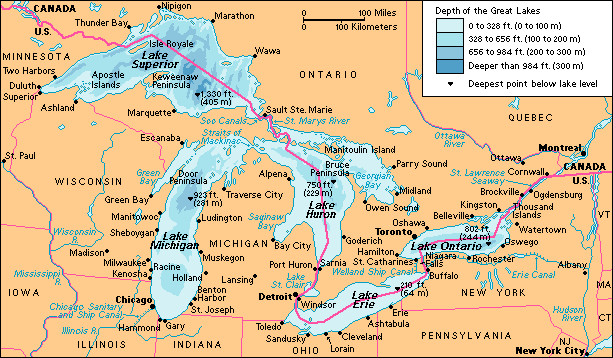Plastic Pollution Invades Great Lakes
November 29, 2012
New research has, for the first time, added the Great Lakes, the world’s largest group of freshwater lakes, to the list of marine ecosystems polluted by plastics. In recent years, seagoing vessels and scientific expeditions have encountered huge areas of floating plastic garbage in both the Atlantic and Pacific oceans. One area in particular, dubbed the Great Pacific Garbage Patch, extends over an area about the size of the state of Texas.
Scientists have raised the alarm about this plastic pollution, which is particularly worrisome because the material does not break down easily. Sea birds, turtles, seals, whales, and other marine animals can get tangled in plastic nets, bags, and packing material. These animals may also mistake plastic items for food and die of starvation if the plastic blocks their digestive system.
Scientists have found, however, that much, if not most, of the plastic pollution consists of tiny, even microsopic, pieces of plastic. In the oceans, plastics are gradually broken apart by sunlight and wave action, producing smaller and smaller pieces. Small marine animals, such as small fish, feed on the tiniest plastic pieces, which they mistake for tiny, drifting animals called plankton. As a result, toxic chemicals from the plastic become concentrated in their body tissue. These toxins are passed up the food chain, becoming more and more concentrated, as larger animals feed on smaller ones. This toxic food chain ultimately leads to human consumers of seafood.

The Great Lakes are Lakes Superior, Michigan, Huron, Erie, and Ontario. The lakes hold about 18 percent of the world's fresh surface water. (World Book map)
Similar microplastic was collected from three of the Great Lakes–Erie, Huron, and Superior–by scientists headed by environmental chemist Sherri Mason of the State University of New York at Fredonia. In an article published on the website Discovery.com, Mason speculated that most of the tiny pieces collected came from plastic bottle caps, chips from boats, and polyethelene microbeads. These plastic beads, which are added to many commercial facial cleansers, pass through water-treatment plants without being broken down.
Additional World Book articles:


